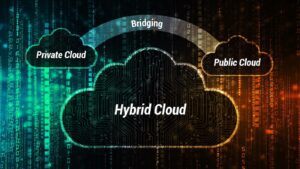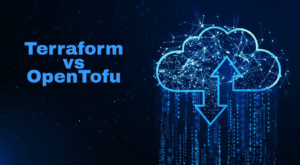Terraform is a popular infrastructure as code (IaC) tool that allows you to manage your infrastructure in a declarative way. This means that you can define your desired state, and Terraform will take care of making the necessary changes to achieve that state.
While Terraform is a powerful tool, it can be complex to use, especially when managing complex AWS infrastructure. In this article, we will discuss how to identify and resolve AWS specific problems in Terraform.
Common AWS specific problems in Terraform
Here are some of the most common AWS specific problems that you may encounter when using Terraform:
-
- Dependency errors: Terraform resources are often dependent on each other. For example, an EC2 instance resource may depend on a security group resource. If you try to create the EC2 instance resource before the security group resource exists, Terraform will throw a dependency error.
# Check for dependency errors
terraform validate
-
- State errors: Terraform uses a state file to track the state of your infrastructure. If the state file is corrupted or out of sync with your real-world infrastructure, Terraform may throw a state error.
# Check for state errors
terraform refresh
-
- Provider errors: Terraform providers are responsible for managing resources in specific cloud providers, such as AWS. If there is a problem with the AWS provider, Terraform may throw a provider error.
# Check for provider errors
terraform provider install aws
-
- Configuration errors: Terraform is a declarative language, so any errors in your configuration can cause Terraform to fail.
# Check for configuration errors
terraform validate
How to identify AWS specific problems in Terraform
There are a few ways to identify AWS specific problems in Terraform:
-
- Read the Terraform output: Terraform will output a detailed report of its actions, including any errors that it encountered. This output can be helpful in identifying the cause of problems.
# Read the Terraform output
terraform output
-
- Check the Terraform logs: Terraform also keeps logs of its activity. These logs can be helpful in troubleshooting problems.
# Check the Terraform logs
terraform logs
-
- Use the Terraform
terraform plancommand: Theterraform plancommand will show you the changes that Terraform will make to your infrastructure if you run theterraform applycommand. This can be helpful in identifying potential problems before you apply your changes.
- Use the Terraform
# Use the Terraform `terraform plan` command to identify potential problems
terraform plan
-
- Use the Terraform
terraform validatecommand: Theterraform validatecommand will check your Terraform configuration for errors.
- Use the Terraform
# Use the Terraform `terraform validate` command to check your Terraform configuration for errors
terraform validate
How to resolve AWS specific problems in Terraform ?
Once you have identified the cause of the problem, you can take steps to resolve it. Here are some tips:
-
- Dependency errors: If you are getting a dependency error, you need to make sure that the resources that your resource depends on are created before your resource is created. You can do this by explicitly defining dependencies between your resources in your Terraform configuration.
Resolve dependency errors by explicitly defining dependencies between your resources in your Terraform configuration
-
- State errors: If you are getting a state error, you need to fix the state file. You can do this using the
terraform refreshcommand or by manually editing the state file.
- State errors: If you are getting a state error, you need to fix the state file. You can do this using the
Resolve state errors by using the terraform refresh command or by manually editing the state file
-
- Provider errors: If you are getting a provider error, you need to troubleshoot the problem with the provider. You may need to update the provider to a newer version or contact the provider developer for help.
Resolve provider errors by troubleshooting the problem with the provider or by updating the provider to a newer version
-
- Configuration errors: If you are getting a configuration error, you need to fix the error in your Terraform configuration. You can use the Terraform
terraform validatecommand to help you identify configuration errors.
- Configuration errors: If you are getting a configuration error, you need to fix the error in your Terraform configuration. You can use the Terraform
# Resolve configuration errors by fixing the error in your Terraform configuration
Tips for preventing AWS specific problems in Terraform
Here are some tips for preventing AWS specific problems in Terraform:
-
- Use modules: Terraform modules can help you to avoid common problems by providing pre-built Terraform configurations for common AWS resources and services.
-
- Test your changes: Before you apply your changes to your production environment, you should test your changes in a staging or development environment. This will help you to identify
For more information on how to address Terraform problems in AWS, please read the following article : https://aws.amazon.com/blogs/apn/terraform-beyond-the-basics-with-aws/






